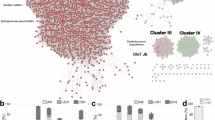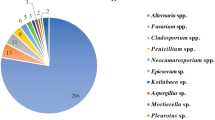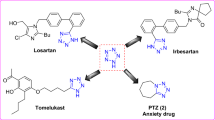Abstract
AN organism isolated during a microbiological study of corn spoiled in storage produced an aroma reminiscent of exaltone and crystalline bodies in artificial culture. The chief component of the crystalline bodies has been isolated as colourless, odourless needles, melting at 204° C. We have named this compound decumbin. We have concluded from work to be presented elsewhere that it is a previously unreported dihydroxy, α-β unsaturated lactone (C16H24O4).
This is a preview of subscription content, access via your institution
Access options
Subscribe to this journal
Receive 51 print issues and online access
$199.00 per year
only $3.90 per issue
Buy this article
- Purchase on SpringerLink
- Instant access to full article PDF
Prices may be subject to local taxes which are calculated during checkout
Similar content being viewed by others
References
Haynes, L. J., Quart. Rev., 2, 46 (1948).
Author information
Authors and Affiliations
Rights and permissions
About this article
Cite this article
SINGLETON, V., BOHONOS, N. & ULLSTRUP, A. Decumbin, a New Compound from a Species of Penicillium . Nature 181, 1072–1073 (1958). https://doi.org/10.1038/1811072a0
Issue date:
DOI: https://doi.org/10.1038/1811072a0
This article is cited by
-
Identification of novel antiviral of fungus-derived brefeldin A against dengue viruses
Tropical Medicine and Health (2017)
-
A CREB3–ARF4 signalling pathway mediates the response to Golgi stress and susceptibility to pathogens
Nature Cell Biology (2013)
-
Ras superfamily GEFs and GAPs: validated and tractable targets for cancer therapy?
Nature Reviews Cancer (2010)
-
Cytotoxic activities of trichothecenes isolated from an endophytic fungus belonging to order hypocreales
Archives of Pharmacal Research (2008)



